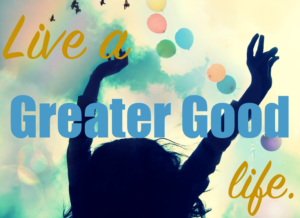By LadyJulBug
 Everyone wants to be happy.
Everyone wants to be happy.
Everyone wants to live a good life.
I don’t think those are over-generalizing assumptions about our species.
The path towards achieving these goals looks different for each person.
For me, it looks like education and science.
A few years ago, I was taking a course on Diversity in Education as part of my professional education minor requirements. In this class we had an assignment to research and present on a topic related to the course material. I chose to focus on bullying. In my research, I discovered that there are three types of people who participate in bully situations: the bully, the victim, and the bystander. I discovered that the bystanders play the most important role. They either fuel the situation by remaining neutral or by joining in, or they can be a force for good and intervene. I wondered: how do we get them to speak up? In my research, I discovered that there are two factors in play when a person decides to speak up during a situation like this. They need to care about the victim, and they need to feel like if they speak up it will help. Getting people to feel empowered enough to speak up is the easy part. Making them care about the person they’re standing up for is much more difficult. This requires empathy. So, I started researching empathy. I wanted to know how to instill this quality in others.
In my research, I discovered much more than I ever expected to learn.
I discovered the secrets to living a happy life.
I found The Greater Good Science Center from Berkeley, where they explore the “Science of a Meaningful Life.” When I came across their website, I was shocked to find that there’s a wealth of information and research on the best qualities humanity possesses: kindness, altruism, forgiveness, gratitude, mindfulness, compassion, and empathy. When I started reading this information, it spoke to me in a way I understand.
Seeing it in research somehow made the necessity for these qualities more important to me. I think before this, I knew these were qualities I valued and tried to embody. Yet, somehow I didn’t always put so much emphasis on them. I was mostly kind. I could be compassionate sometimes. Too often I failed to show gratitude, but I tried to be altruistic. Forgiveness wasn’t always something I strived for. Empathy was something I extended to many people, but too often not towards everyone. Something about understanding the science behind all of these good qualities made me want to focus on them in every situation, to be better at them.
Soon after I discovered this treasure, I found out that they were trying to start up a website dedicated to translating this research into something useful: how to apply it to ourselves, to put it into action. So, I donated to the cause. A month later, the “Greater Good in Action” website was launched. Here, you can find a wealth of activities to help develop and promote these good qualities in yourself and others.
One of the sections I particularly found useful was an activity for promoting empathy in others called “Putting a Human Face to Suffering.”
It goes like this:
TIME REQUIRED
How long it takes you to do this practice will vary depending on which strategy you choose, but make it a goal to follow one of these strategies at least once a month.
HOW TO DO IT
To inspire others (or yourself) to give time or resources to a cause, try at least one of the following strategies. However, avoid explicitly telling others that you are using these strategies to get them to give more—research suggests that can backfire.
1 When researching a problem in news reports or other sources, look for profiles of specific individuals.
2 Use photographs and video footage—not just individuals’ names—in your appeal to make the problem more vivid and emotionally moving.
3 Use descriptive language and identifiable details that allow people to imagine themselves in a specific victim’s shoes, rather than abstract language that presents facts and statistics.
4 Don’t feature the stories of too many individuals; research suggests it’s easier to foster an emotional connection to a single person in need than to multiple people.
5 When possible, try to make direct contact with victims. For example, if you are a teacher, consider bringing in a speaker—in person or via a video call— who can share a first-hand story with your students (assuming you can’t visit the disaster site with a relief organization, which would be even more effective).
As a teacher who’s interested in making our society a more beautiful place to live, science has provided me with the knowledge I need to help me effectively instill empathy in my students.
More incredibly, science has provided me with the knowledge I need to help my friends and family, as well as myself, develop these good human qualities that can ultimately improve the world around me. As a person with a naturalistic worldview, these science based practices excite me, because this is what I understand. It’s what speaks to me. I can look at the research, comprehend what it means, and apply it in a meaningful way. I have the deeper understanding that I naturally crave.
Here is a tool that can help not just myself, but others understand how to most effectively apply them to our lives, and to understand the research behind what we’re doing.
I share these in the hopes that we can use them to our benefit.
I share these in the hopes that we can use them to the benefit of our society.
